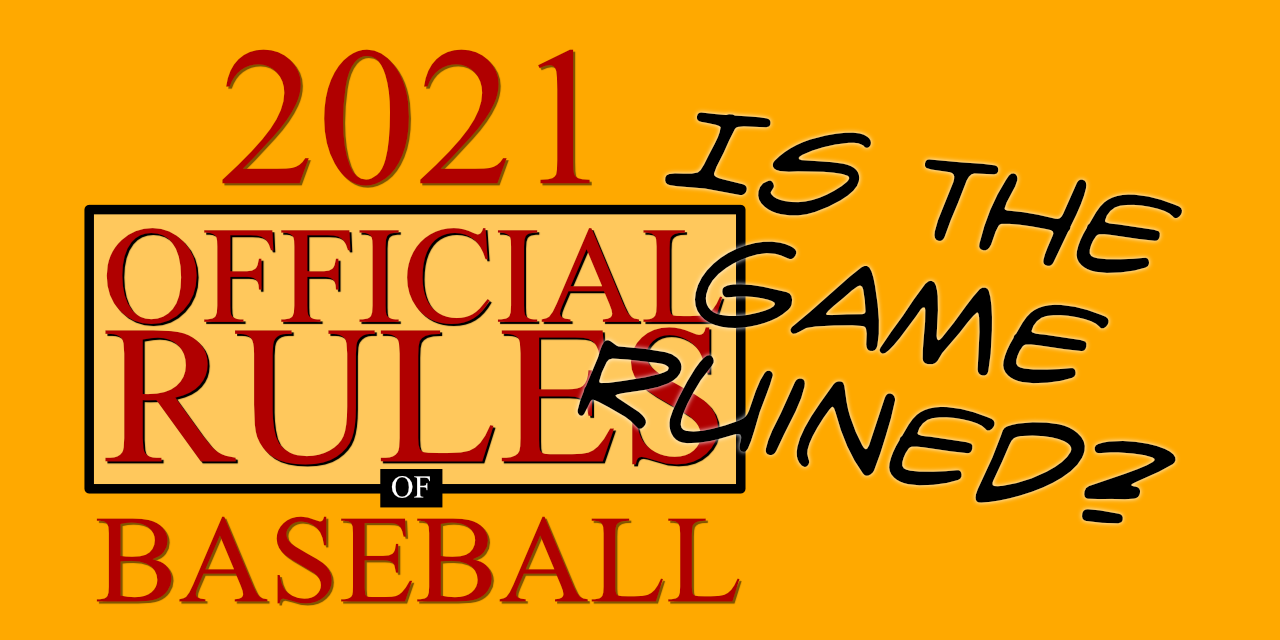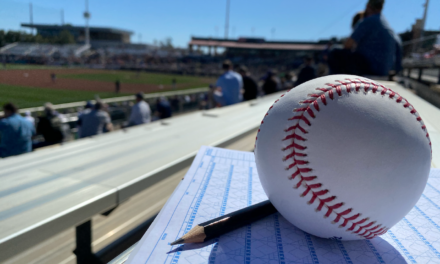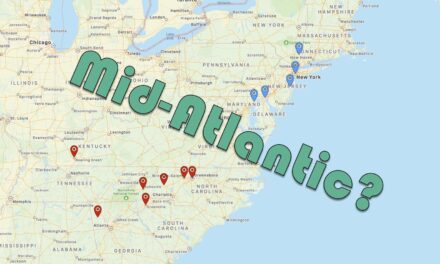Wow.
Major League Baseball is experimenting with new rules. That’s nothing new.
But the number of new rules, and with different leagues getting different rules…wow. I haven’t seen this before.
A number of the new rules are not completely new. Some were being tested in the Atlantic League, like bigger bases and the robo-ump…sorry, ABS system. But all of them will have some effect on the game. Maybe not game changing, but definitely an effect.
There are going to be two over-arching effects that I see.
- Different rules in different leagues will add more challenges to players moving up and down the system. This will especially be true for pitchers at the lower levels. The rules about limited pickoffs, and about step offs, will invariably lead to unforced errors by pitchers as they try to adapt. If they move up and down the levels, that will only add to the confusion as they move.
- Different rules will affect how scouts, executives, and fans can look at stat lines and performances across the board. Stolen base rates will obviously be affected, and affected in different ways. Not to mention pitchers and runs allowed. Hitters in Double-A will have an advantage they don’t see in other levels. And even catchers, and their defensive stolen base rates.
Those things alone will be worth keeping an eye on. But let’s take a look at each level’s changes.
Triple-A – Larger Bases
This seems like a simple one. The bases are increased in size by three inches on each side. The biggest effect is hopefully safety, helping to reduce collisions and allow more room. And the distance between bases has been shortened, so that could potentially have an effect on things like stolen bases and runners getting to the bag before a throw.
But, let’s be honest..the difference between the bags will be 4.5”. Between the plate and either bag will be 3”. It’s doubtful we’ll see a significant change in stolen bases or hits because of that closeness.
What might be more of a difference is not in how much smaller a distance got, but how much bigger one did. With bags being three inches wider, what that does allow is more room for a runner to tag, and more space for a fielder to have to cover. That might have a bit of an increase in stolen bases and other runners getting in safely…but probably not a significant amount.
My Thoughts: This impact in any direction is small, but it is safer. So I’m pretty okay with this rule change.
Double-A – Defensive Positioning
This is the one that’s been raising the most hackles in online communities, and without any consensus. Some people really like this move, others hate the limitation.
At the first implementation, there can still be a shift, so long as all the players are on the infield. It may not be as effective, but it could still be employed. But MLB has retained the right to take it further, requiring that two infielders be “entirely” on each side of second base.
The effect is obvious: more hits. And this could be a significant change for some hitters…and the pitchers.
The main criticism for this is that teams should just bunt more away from the shift, which I do understand…but I’m not convinced.
My Thoughts: I’d certainly rather see solidly hit baseballs with a chance for power than bunts over and over. But we’ll see. I’m a bit ambivalent about this rule change. I could have my mind changed.
High-A – Step Off Rule
This one is going to be tough on pitchers. Especially on left-handed pitchers. If this was implemented in a league Madison Bumgarner was in, there might be a fight coming Manfred’s way.
Left-handed pitchers in particular lose the pickoff moves that kept runners close. Right-handers lose their snap throws. And stolen bases should increase significantly across the league
It may also result in batters facing less breaking pitches, to give catchers as big an edge as possible.
My Thoughts: I like stolen bases. But dang, this could really change the game for steals. It will mean more players are dangerous on the bases, it will mean that faster players are more likely to get extra bases. And if it becomes widespread, it will mean that speed players will become that much more valuable.
It’ll also have a small effect on catchers, making those with stronger arms that much more valuable.
I worry this might be too drastic a change, though. But it definitely will change the balance in favor of baserunners.
All of Low-A – Pickoff Limitations
And, this is almost as heavy as the Step Off rule. Two pickoff attempts per inning, and you can try a third time but if it isn’t successful, it’s a balk. This completely changes the strategy of pick off attempts, and can back pitchers into a tough spot where runners almost don’t have to worry about a pickoff at all.
My Thoughts: Normally, I like strategy, or things that add strategy, but this feels like a step far. It’ll give some baserunners essentially a carte blanche to run once they dare pitchers to try a couple of times. And possibly even just one time, if MLB decides to adjust the rule.
I certainly hope baseball never tries to combine both the stepoff rule and the pickoff limitation, because we’ll never see a runner stay on first again, unless they are Yadier Molina.
Low-A Southeast – Robotic Strike Zone
Come on, you knew it was coming, I knew it was coming.
I’m surprised it’s being limited in only the small amount of stadiums that it is. It’s certainly the most expensive change for baseball to implement, so I understand that. But it’s coming.
My Thoughts: The “human element” can get a bit frustrating, and it seems every season we have a few games where we complain about the umpire inserting themselves into games. I’m ready to give this a try.
Low-A West – On-Field Timers
This was done in the minors before, and now we’re just putting clocks everywhere to let people know to hurry up.
This is being paired with the pickoff limitations, since pitchers had used that as a workaround in Triple-A and Double-A in the past, and so this makes sense. This will definitely increase the pace of play in a more substantial way.
This, again, can help basestealers, in the same way that defensive linemen might time the ball being snapped in a football game with the play clock ticking down. But it could also encourage more pitchers to make use of quick pitches to throw off the other teams.
My Thoughts: This I am all for. I love fast-working pitchers, and I’m okay making it the rule.
So, no, I don’t hate these rule changes. But some of the things facing baserunners could definitely change the game into a more athletic and exciting performance.
Ultimately, baseball is always changing. I usually don’t see rule changes as reducing strategy. It’s about changing your strategy as the game changes.







Recent Comments